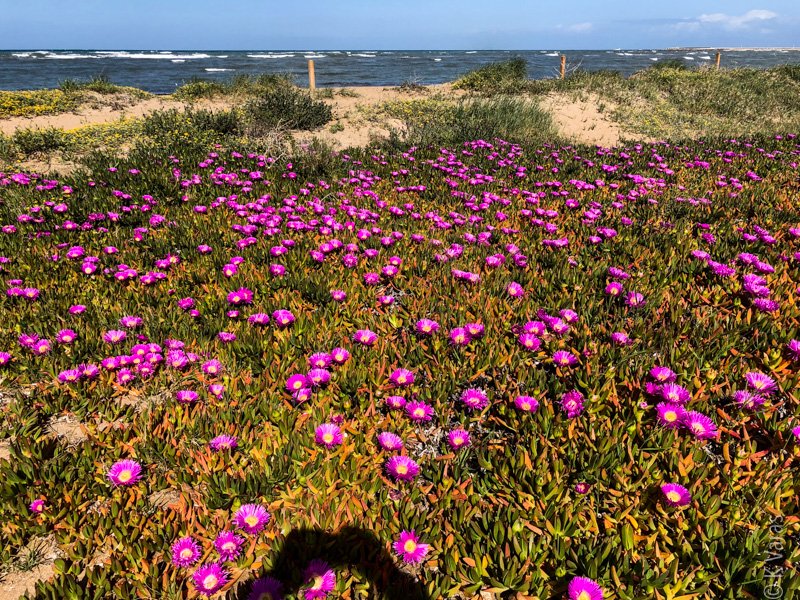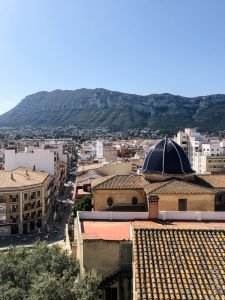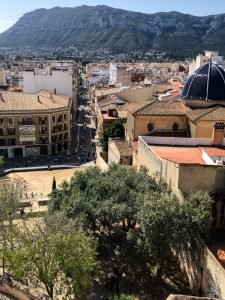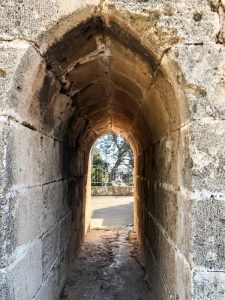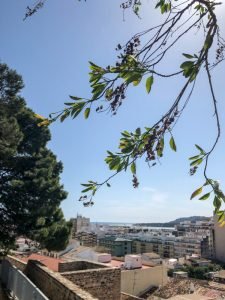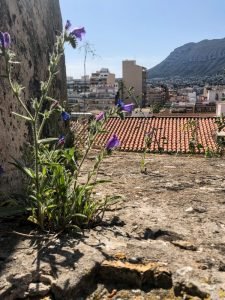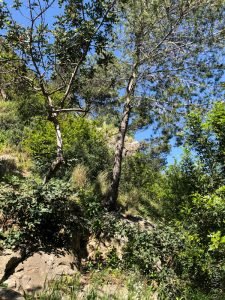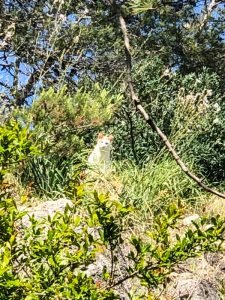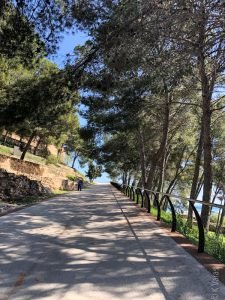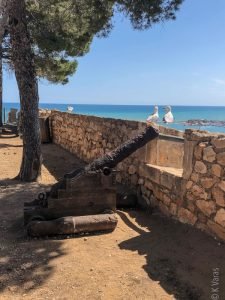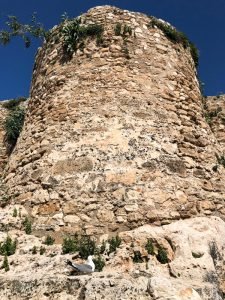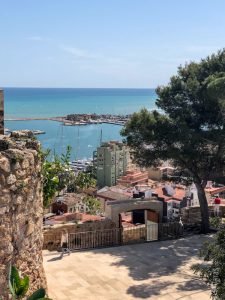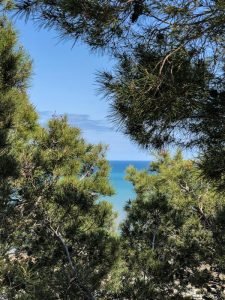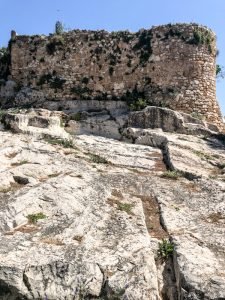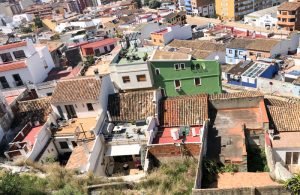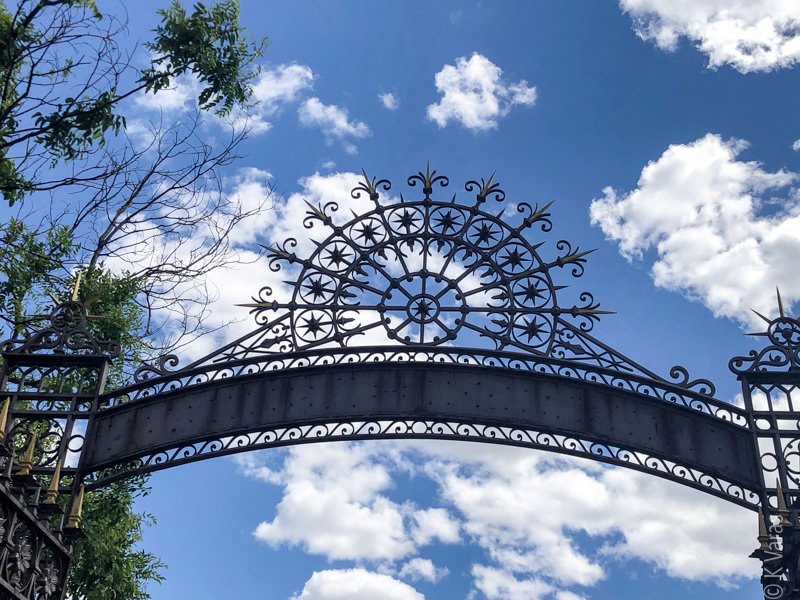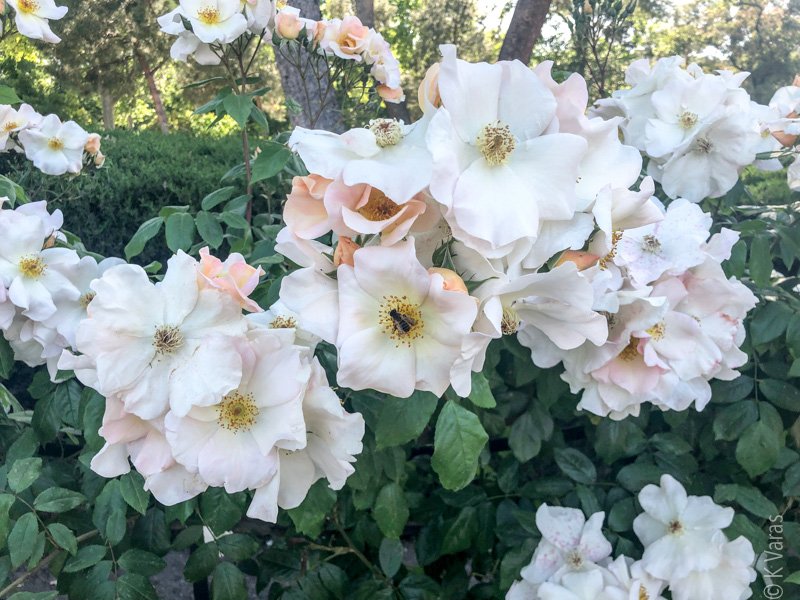
Castell de Dénia
Seeing the weather forecast for the next few days, it was clear I had to get up to the Castell de Dénia as soon as possible, mostly to see the view in the best light possible. Fortunately the weather gods were happy with me on this day and I headed out to find the entrance. Most castles I’ve been to so far have an entry point that is easy to find: after all, most want the tourist to be able to find a way in with minimum effort. Dénia, however, doesn’t seem to be one of those. Google certainly wasn’t terribly helpful either, once even telling me I should use the under-the-mountain tunnel when I asked for a path to the top. Go figure. Never one to give up, I decided to take GoogleMaps’ suggestion as starting point, and off I went to explore.

Ultimately it wasn’t that difficult, though no thanks to an abundance of signage. I just kept climbing the steep lanes until a path opened up and there was the entrance, carved into the castle wall. I had to wait a bit to buy my €3 ticket as there was a group of high school students ahead of me. I had a feeling we were going to be crossing paths a lot.
The Andalusian-Muslim fortifications of the castle date back to X and XI centuries, but much earlier remains have been found, going back to the Roman era. In the XI century the castle was the residence of the governor of Daniya but the walls also included a second walled area used as a refuge for the residents of the population centre in times of strife, called the albacar. During the Renaissance, a palace was built in the citadel and this still stands today, though, architecturally-speaking, it isn’t a very attractive building at all. It now houses the archeological museum but, unfortunately, it was not open. I was more fascinated by the remnants of the old citadel with what must have been beautiful stone floor mosaic. What was even more incredible were the views.
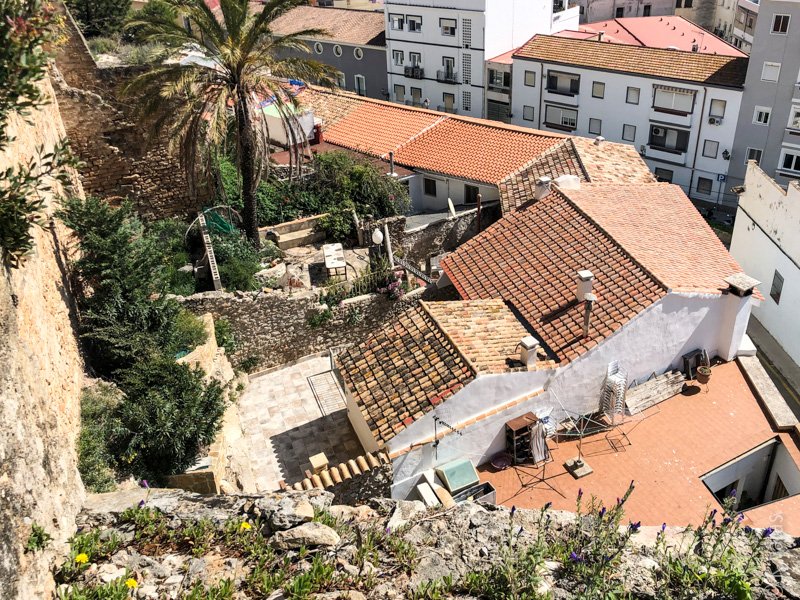
But, before I get to the views, now looking back, I must recount my no so bright idea to go down a path that I thought was going to take me around the castle’s walls. At least that’s what the map suggested. What it turned out to be, however, was a descent to an ever more perilous path with no apparent connection to anything. I suspect that in the past this was a possible route but more recently, whether because of Covid or just due to neglect, the stone path and stairs seemed to lead to nowhere. And, since I was the only person traversing this section of the castle grounds, a slip or trip would have me stranded there for a long time before help came. I did have someone following me, however. At one point I felt like someone was watching me and after careful examination of the trees nearby I discovered that, indeed, I was not as alone as I had originally thought. Unfortunately for me, my stalker wasn’t going to be able to dial 112 (the European emergency number) since he (or she) did not have any opposable thumbs.
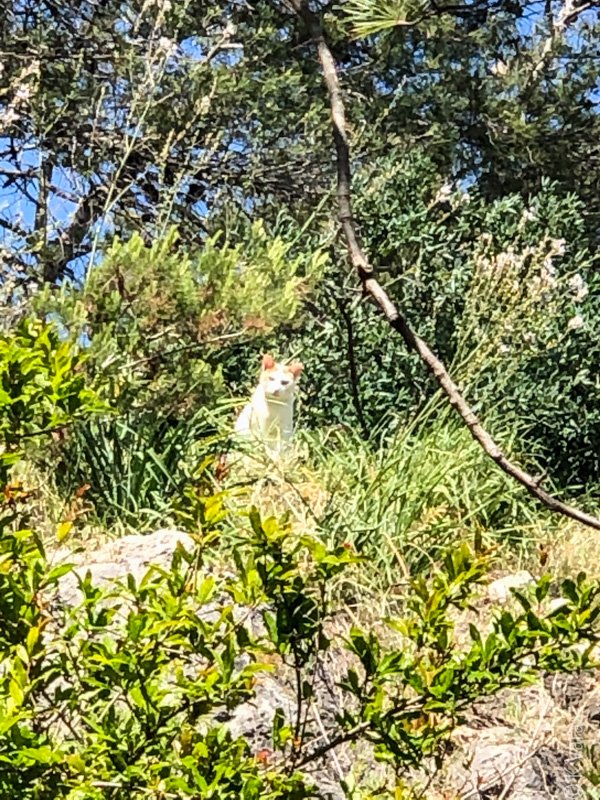
Realizing there was no way to make it around the castle this way, I climbed back up and took the much easier way to the top, all the while accompanied by many seagulls. They were everywhere. And soon, it became clear why there were so many around. This was hatching season, or, more accurately, still sitting-on-the-eggs season (or brooding, as I just discovered), and the gulls flying overhead were probably the partners of the ones doing a very good job incubating. I couldn’t believe how brave some of the moms were, with their nests right in the middle of high-traffic tourist areas. I guess this is one thing wildlife in Spain must learn to live with: tourists.

The rest of my wandering around was primarily spent appreciating the incredible views in every direction. I could see the port and marinas, and, of course, my house, then towards the hills where all the fancy homes are, to the north and the beaches that run up the coast for miles. This also makes it clear why the castle is visible from so many points at sea level: the hill on which the castle sits is very strategically positioned. I did manage to walk along a large portion of the castle wall, although my original attempt is still something I’d like to repeat, except not alone. I’m much smarter now 😉.

As I reached the end of my tour, I came across the terraced gardens I had noticed earlier on. This time, however, I realized that these gardens were actually, at least partially, a working vineyard, which I suspect was a thing in the heyday of the castle, most likely providing produce and grape for the residents, a very handy thing during sieges. Self-sufficiency throughout the ages: smart, very smart indeed.

